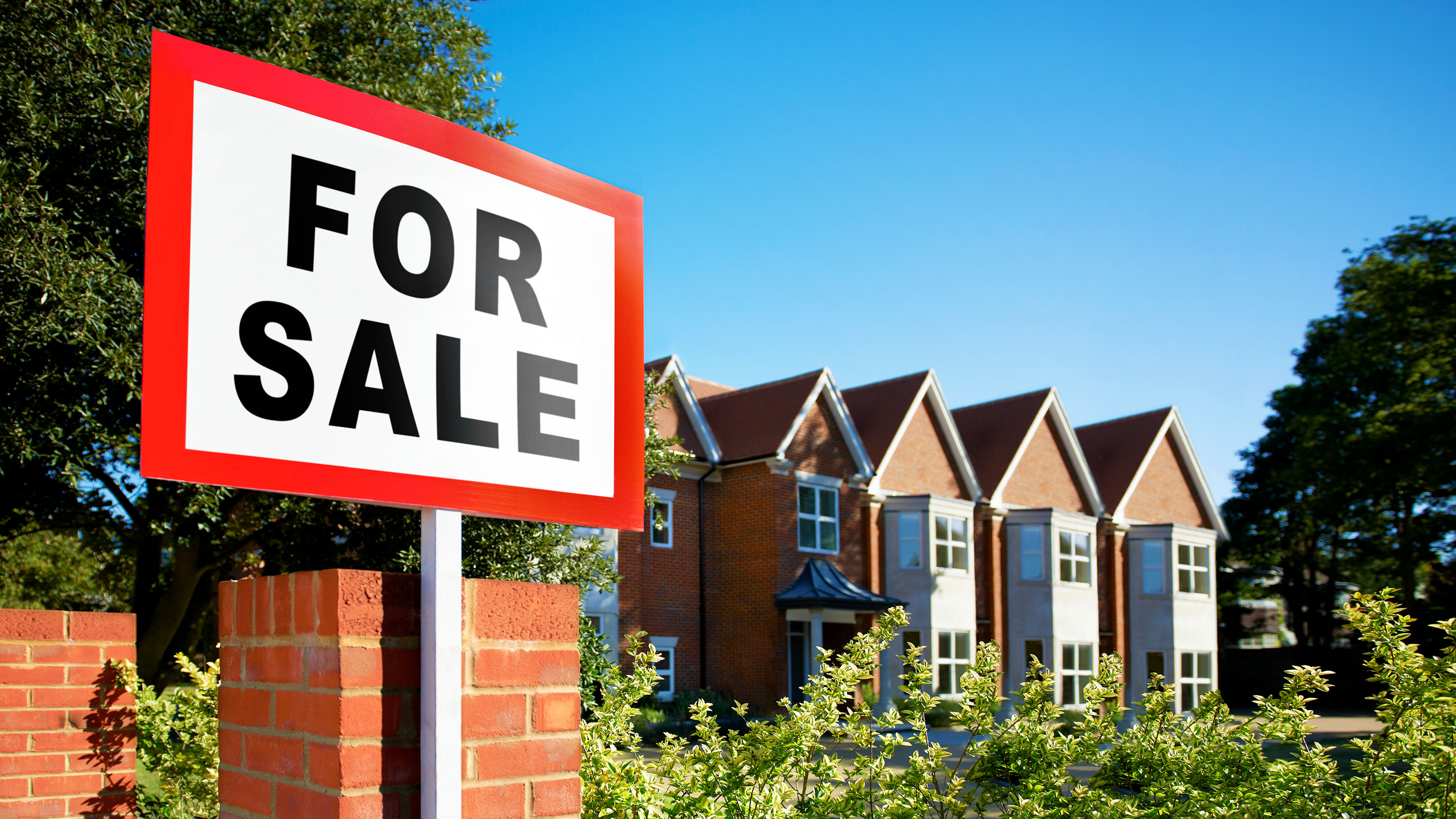Stamp duty changes are now in effect — how much more will you pay?
Stamp duty hikes are here. Understand the costs, plan your next move and avoid paying more than you need to

The stamp duty threshold changes have now officially come into effect as of April 1, 2025, significantly impacting homebuyers across England and Northern Ireland.
The nil-rate band for movers has dropped from £250,000 to £125,000, while first-time buyer relief has been reduced from £425,000 to £300,000. As a result, many buyers are now facing higher tax bills.
Whether you're a first-time buyer or a mover, these changes could significantly affect you when buying a house. Here’s what you need to know to navigate the new landscape.
What is stamp duty?
Stamp duty is a tax paid when purchasing property or land in England and Northern Ireland.
The amount of stamp duty you pay depends on several factors, including:
- Purchase price
- Whether the property will be your main residence
- When the purchase is made
- Whether you're a first-time buyer
The amount depends on the property’s value and the buyer’s status (e.g., first-time buyer or additional property owner). Separate systems apply in Scotland (Land and Buildings Transaction Tax) and Wales (Land Transaction Tax).
How much extra will you pay in stamp duty?
The temporary stamp duty cuts introduced in 2022 have ended, meaning:
Bring your dream home to life with expert advice, how to guides and design inspiration. Sign up for our newsletter and get two free tickets to a Homebuilding & Renovating Show near you.
- Homebuyers now pay stamp duty on all properties over £125,000 (down from £250,000).
- First-time buyers lose part of their tax relief, with their exemption limit reduced from £425,000 to £300,000.
- The average homebuyer could now pay £2,500–£5,000 more in tax compared to last year.
Example impact on homebuyers:
- A £275,000 home now incurs a £7,500 stamp duty bill (previously £1,250).
- First-time buyers purchasing a £350,000 home now owe £2,500 in tax, whereas they previously paid nothing.
Impact on housing market
With the stamp duty changes now in effect, homebuyers who were unable to complete their purchases before the March 31 deadline are facing significantly higher costs.
The nil rate threshold for movers has dropped from £250,000 to £125,000, while first-time buyers now only receive relief on homes up to £300,000, down from £425,000.
This sudden shift has already had an impact. Property transactions surged in March as buyers rushed to beat the deadline, but experts now predict a slowdown in sales as affordability tightens.
For those who missed out on the tax savings, Skipton Building Society has introduced a cashback mortgage offer aimed at easing the financial burden. The new five-year fixed-rate mortgage range provides up to 1.5% cashback to help offset the additional costs brought on by the stamp duty increase.
Charlotte Harrison, CEO of Home Financing at Skipton Building Society, explains: “We understand that many buyers were left scrambling to complete before the deadline, and some unfortunately missed out. Our new mortgage products are designed to provide a financial cushion and support those who now face higher upfront costs due to the stamp duty changes.”
According to Skipton’s Home Affordability Index, the proportion of local authority areas in England where first-time buyers now have to pay stamp duty has quadrupled overnight, rising from 8.4% to 32%.
Robert Gardner, Nationwide's Chief Economist, predicts the market will enter a period of adjustment, stating: “Following the rush to complete before March 31, we expect to see a short-term slowdown in transactions. However, as affordability constraints ease through lower interest rates and wage growth, the market should stabilise later in the year.”
Areas most affected by stamp duty changes
A study by My Home Move Conveyancing has highlighted how first-time buyers in England will be impacted by upcoming stamp duty changes starting in April 2025.
Key findings across 69 local authorities estimated changes in areas included:
- London and the South East: Areas like Richmond, Wandsworth, and Hackney will see stamp duty increases of over £11,000 for first-time buyers.
- University cities: In cities such as Oxford and Cambridge, buyers will face costs ranging from £5,000 to £6,000.
- Northern exception: Trafford in Greater Manchester is the only area in the North where buyers will be affected, with costs above the new threshold.
- Alistair Singer, Director at My Home Move Conveyancing, advises buyers to prepare early to avoid the rush, saying: “The financial impact will still come as a shock to first-time buyers.”
Areas with the biggest impact:
- Richmond upon Thames: Average property price £584,000 | Stamp duty increase: £11,250
- Wandsworth: Average property price £545,000 | Stamp duty increase: £11,250
- Oxford: Average property price £419,000 | Stamp duty increase: £5,950
- Brighton and Hove: Average property price £350,000 | Stamp duty increase: £3,900
As the April 2025 deadline approaches, many first-time buyers are expected to rush to complete their purchases to avoid the higher costs. Alistair Singer stresses the importance of early planning, adding: “Instructing a conveyancer early in the process should help avoid any disappointment.”
For those in affected areas, acting quickly could make a big difference in securing a property before the changes take effect.
Will the stamp duty rules change again?
The Labour Government haven't announced any plans to revise stamp duty rates.
In a June 2024 interview, Prime Minister Keir Starmer confirmed that the government will not be renewing the cuts introduced in 2022, meaning the new tax rates are set to remain in place for the foreseeable future.
Will house prices fall due to higher stamp duty?
Some experts believe the increased tax burden will put downward pressure on house prices.
David Hannah, Chairman of Cornerstone Tax, warns that the combination of higher stamp duty and affordability challenges may lead to a slowdown in transactions, with the market taking time to adjust. Others suggest that if interest rates continue to decline and wage growth improves, house prices may stabilise later in the year.
For those still looking to buy, exploring mortgage options that offer financial incentives, such as cashback deals, may help offset some of the increased costs. Hannah also advises acting sooner rather than later could also be beneficial, as market conditions remain uncertain in the wake of these tax changes.
With the new stamp duty thresholds now in place, homebuyers need to plan carefully to manage the higher costs.
The stamp duty changes could change the minimum amount of money you need to buy a house so whether you're a first-time buyer or moving up the property ladder, staying informed and exploring financial support options can help ease the burden.
As the market adjusts, now is the time to assess your next steps and make the best decision for your future home. Stay tuned for the latest updates on property trends, mortgage rate rises and expert insights to help you navigate the changing landscape.

News Editor Joseph has previously written for Today’s Media and Chambers & Partners, focusing on news for conveyancers and industry professionals. Joseph has just started his own self build project, building his own home on his family’s farm with planning permission for a timber frame, three-bedroom house in a one-acre field. The foundation work has already begun and he hopes to have the home built in the next year. Prior to this he renovated his family's home as well as doing several DIY projects, including installing a shower, building sheds, and livestock fences and shelters for the farm’s animals. Outside of homebuilding, Joseph loves rugby and has written for Rugby World, the world’s largest rugby magazine.
